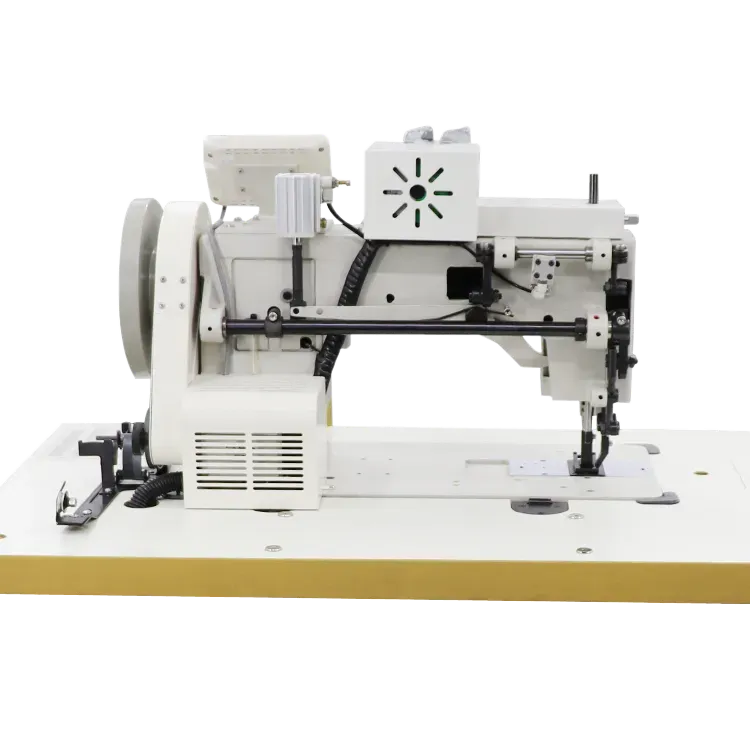Exploring the Differences Between Straight Stitch and Zigzag Sewing Machines for Versatile Crafting
The Importance of Straight Stitch and Zigzag in Sewing Machines
Sewing machines have revolutionized the world of textile creation, allowing both amateurs and professionals to produce high-quality garments, crafts, and home decor items with relative ease. Among the myriad of features that modern sewing machines boast, two essential stitches stand out the straight stitch and the zigzag stitch. Understanding their functions, uses, and the technology behind them can greatly enhance a seamstress's or tailor's capabilities.
The Straight Stitch
The straight stitch is the most fundamental stitch in sewing, serving as the backbone of garment construction. It is characterized by its straightforward, linear pattern, which securely joins fabrics together. This stitch is used extensively for seams in woven fabrics and is favored for its durability and simplicity.
Straight stitches are not only functional but also versatile. They can be adjusted for length depending on the project—shorter stitches create a tighter seam, which is ideal for lightweight materials, while longer stitches are ideal for heavier fabrics. Many sewing machines offer adjustable tension settings to ensure that the straight stitch produces neat, even results regardless of the fabric type.
The straight stitch is also the foundation of numerous sewing techniques, including topstitching and basting
. In addition, it is often the preferred method for quilters, making it an indispensable skill for anyone looking to delve deeper into the art of sewing.The Zigzag Stitch
straight stitch and zig zag sewing machine

The zigzag stitch, on the other hand, provides a different set of capabilities. Recognizable by its alternating left and right movements, the zigzag stitch is especially useful for finishing the edges of fabric to prevent fraying—a common issue in woven textiles. By sealing the edges with a zigzag stitch, sewers can dramatically improve the durability and lifespan of their finished projects.
Zigzag stitches are highly versatile, making them suitable for a variety of applications beyond edge finishing. They can be used for appliqué, decorative stitching, and creating stretch seams in knit fabrics. The ability to adjust the width and length of the zigzag stitch on most machines allows for even more creative possibilities, enabling sewists to incorporate intricate designs into their work.
Choosing the Right Stitch for the Job
Ultimately, the choice between a straight stitch and a zigzag stitch depends on the specific requirements of the project. For straightforward seams in woven fabrics, the straight stitch is often the go-to option. Conversely, for knits or when finishing fabric edges, the zigzag stitch can be invaluable.
As sewing machines continue to evolve, many models offer advanced features that combine the best of both worlds. With programmable stitch settings and built-in sewing algorithms, users can seamlessly switch between straight and zigzag stitches, adapting to the needs of diverse projects.
Conclusion
In summary, the straight stitch and zigzag stitch are foundational elements of sewing machines, each with unique applications and advantages. Mastering these stitches is essential for anyone looking to enhance their sewing skills, whether for personal projects or professional endeavors. As technology advances, sewers have access to a plethora of resources that enable them to experiment creatively with both stitches, leading to innovative designs and techniques. By understanding the importance of each stitch, sewists can unlock their potential and elevate their crafting to new heights.
-
Industrial Cylinder Arm Sewing Machine: Revolutionizing Heavy-Duty SewingNewsJul.28,2025
-
Cylinder Arm Sewing Machine: Perfect for Special Sewing ApplicationsNewsJul.28,2025
-
Cylinder Bed Sewing Machine: Essential for Sewing Complex MaterialsNewsJul.28,2025
-
Heavy Duty Sewing Machine: The Essential Tool for Industrial ApplicationsNewsJul.28,2025
-
Computerized Pattern Sewing Machine: Revolutionizing Precision StitchingNewsJul.28,2025
-
Heavy Duty Industrial Sewing Machine: Power Meets PrecisionNewsJul.28,2025
-
Leather Sewing Machine: The Industrial Standard for Tough MaterialsNewsJul.18,2025





























